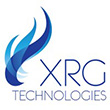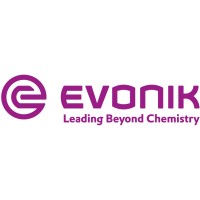-
CO2 reduction in fried equipment
Fired heaters emit millions of tons of carbon dioxide (CO2) every year. Fired heaters usually have a fuel efficiency well below 100%, so any improvements that making them more efficient reduces CO2. Heaters are currently fuelled by carbon-bearing refinery fuel gas or natural gas, so further CO2 reduction is possible by changing to fuels with less carbon content. With the ever-changing regulatory climate, enacting an emissions reduction plan can provide a strategic advantage ...
-
Ultra-light crudes and condensates are here to stay. These streams have flooded the market in recent years, and many of them are deeply discounted against reference crudes. Refiners have been processing increasing percentages of this light material through their Crude Distillation Units (CDUs) up against unit naphtha handling limits. On the surface, processing condensate and other ultra-light crudes with high API gravity and low sulfur should be easy. In reality, many refiners ...
-
Customized grading solutions for your feedstock
Match your catalyst grading to your feedstock for minimum pressure drop build-up and maximum demetallization. As today’s opportunity crudes and heavier feedstocks become more economically viable, the oil fractions you refine are posing new challenges. Creating the optimal grading solution for your individual feedstock is essential to minimize pressure drop build-up, increase metals pick-up, and reduce downtime and catalyst replacement. An overlooked advantage The importance ...
-
Designing deepcut vacuum units that really work
Every barrel of vacuum gas oil (VGO) you can save from being reduced to coke in the delayed coker unit is a barrel more that can go to the FCCU. That’s a good reason to raise HVGO cutpoint. But how to do it? Some people think the job can be done just by running computer models in the engineering office, relying on vendors and their data sheets for a clue to true equipment performance. Experience, however, shows it just ain't so. For either a grass roots project or a revamp, ...
-
Diagnostics™ Leak Study Optimise Ammonia Synthesis Loop
How can Tracerco help optimise performance in my ammonia synthesis loop? If you are trying to determine why the ammonia synthesis line is not performing as efficiently as expected, a series of tracer tests can be carried out for troubleshooting the different processing loops of ammonia synthesis and converter lines. Tracerco Diagnostics™ Leak studies have proven invaluable in identifying potential areas or locations of leakage within an ammonia synthesis processing loop, converter, ...
-
Many attractive projects fail to meet expectations at startup. Disappointing performance often results from bad simulation practices and/or poor equipment design rather than faulty execution. Refineries are currently considering FCC revamps to increase olefins for more alky unit feed, maximize LCO product recovery, and minimize slurry product by producing HCO for hydrocracker feed. These changes raise fractionator operating temperature. Higher temperatures require better process ...
-
Expertise beyond the column LPG Treating
DC Coalescer™. Composite two-material design with very different surface free energies — typically metal and plastic. This simple principle offers notable advantages over conventional, single medium alternatives. The combination of both high and low surface energies gives effective separation irrespective of which phase is dispersed. The rate of coalescence is significantly increased.
-
One common cause for coking is poor vapor distribution. Packing selection in the Slurry P/A section is critical to ensure good distribution and reliable performance. Mellagrid™ combines the performance of Mellapak™ with the robustness of traditional grid. Resists coking and fouling due to its smooth surface and geometrical. Better de-entrainment and separation efficiency than traditional grid. Efficient dissipation of temperature. Excellent mechanical strength.
-
Gain 5-10% efficiency with this simple 4-pass tray revamp
The design of 4-pass trays can be complex. It not only requires a close evaluation of the mechanical design but also the process response to that design at various flow rates. The balancing of the fluid flows across the tray can have a substantial effect on the tray performance, namely efficiency. Many existing columns are operating with older 4-pass designs. While some of these are well designed, others could use some improvement. Since 4-pass trays always involve a fairly ...
-
Gas/Liquid separation technology
Sulzer is a major player in the field of gas/liquid and liquid/liquid separation technology, offering a full range of innovative products and related services. Our commitment to development of technology, combined with application knowhow and consistent fabrication standards ensures that a well-engineered solution is available for most separation problems. Our expertise gained from hundreds of successful installations in a broad spectrum of applications ensures that the best ...
-
High Velocity Thermal Spray (HV TS) Advantages
With experience from hundreds of projects, not only in the power industry but also in other highly EHS sensitive industries such as nuclear and oil & gas, IGS has an unmatched track record to comply with the most stringent requirements on environment, health and safety standards. IGS has consistently led the industry in HVTS protection for over 30 years. We operate a world-wide, ISO 9001, ISO 14001, ISO 45001 Technology center which has allowed us to create, test and improve ...
-
Improve separation in your column by increasing the number of trays
Refiners often face revamp challenges when trying to improve separation within an existing column. Improving diesel recovery from gas oil, splitting benzene precursors from naphtha reformer charge, or simply minimizing product overlaps after capacity creep can all be difficult when limited by a fi xed existing tower height. For these cases, revamp solutions that increase the number of theoretical stages by adding trays to an existing column or a section of a column pay large dividends. ...
-
Increase capacity in your column with a tray design revamp
When trying to increase column capacity beyond design rates, an operator may notice loss in separation efficiency or high pressure drop, indicative of either vapor phase or liquid phase hydraulic limitations. An optimized tray design can eliminate hydraulic constraints to provide better column capacity and performance. Common Vapor Constraints to Raising Throughput In systems limited by higher vapor rates (typically lower pressure systems), jet flooding may constrain the column. ...
-
Optimising the efficiency of shutdowns and turnarounds to improve processes
Tracerco’s diagnostic techniques provide you with the invaluable insights you need to reduce your turnaround times and costs by identifying operational process problems and mechanical integrity of internals in real-time and whilst online. Tracerco’s level, density, interface and multiphase nucleonic instrumentation provides invaluable insights to help you make informed decisions to increase profits, manage risks and reduce costs. Making data-driven decisions can significantly ...
-
Introduction to the Sinopec Closed Coke Handling System
The Sinopec Closed Coke Handling System (S-CCHS) is a safe and eco-friendly closed petroleum coke removal, conveying, and storage system with remote intelligent operation for pollution-free coke removal. This webinar will introduce the technology and its applications, with an emphasis on how it can be applied in your delayed coking unit operations. By attending, you will gain insights into: - Components and operation of the S-CCHS technology - How S-CCHS can eliminate ...
-
New digital tools to improve operational profitability in refineries
View this webinar to learn how you can leverage new digital tools as part of the Honeywell UOP upgraded PremierPLUS Performance Services offering to avoid unplanned downtime, optimize process performance, manage personnel changes, and reduce energy and emissions. The PremierPLUS Performance Services offering addresses these challenges and can improve operational profitability by an average of $1M to $5M per year. Attending this webinar will give you an overview of Honeywell ...
-
Excel® Technology: The Sustainable Solution for HydroProcessing Catalysts
Unveil the path to sustainable catalyst processes with Excel® Rejuvenation Technology! Join us as we delve into the art of catalyst rejuvenation, uncovering the means to propel your processes towards enhanced sustainability and waste reduction. Learn how to steer your operations away from wasteful practices and embrace sustainability using Evonik's Excel® Hydroprocessing Catalysts solutions. Our certified Life Cycle Assessment (LCA) lays bare the potential emissions you can ...
-
A new perspective on improving process and operational efficiencies
Presented with ageing equipment and ever-increasing environmental restrictions, process engineers are challenged with maximizing efficiency and mitigating problems. Without the necessary information, facing this challenge can be difficult or impossible. Tracerco provides you with the insights you need to help troubleshoot production problems and optimise processes. With the widest range of scanning and tracer diagnostic services on the market, Tracerco helps the refining and ...
-
Preparing for a petrochemical plant revamp or technology upgrade
Petrochemical producers have recently confronted unprecedented volatility in crude oil prices and limits on advantaged feedstock, while the refining and gas sectors remain vigilant to global supply conditions. However, some industry challenges remain unchanged, such as the need to optimize plant operations and cut carbon footprint by reducing the amount of energy required to drive a plant. Equipment nearing the end of its operational life can not only put plants at risk of ...
-
The case for plant modernization and upgrades
With a system that's outdated or showing signs of it, you are well aware of the risks of running your plant processes with aging hardware and software. Waiting to modernize will impact your cost of ownership due to shortages of critical parts and support, will increase risk of an unplanned production shutdown, and likely will have no incremental benefits. A well-designed modernization approach allows the opportunity to reduce system footprint and costs. Whether by eliminating ...
-
Understanding the financial impact of a collapsed flue gas tunnel in your SMR
The overall influence of tunnels on the flue gas flow in a steam methane reformer has been modeled and documented, and the concept that running a reformer without tunnels can decrease overall efficiency is well understood in the industry. The study detailed in this webinar focuses on the effects of operating a reformer after removing just a single tunnel, leaving the rest in place. The resultant flue gas flow field is analyzed by looking at temperature profiles, residence time ...
-
From hydrogen production to sulphur recovery - let ceramics pave the way
Learn how to boost the reliability and performance of your hydrogen production and sulphur recovery plants through the deployment of Blasch’s proven ceramic systems. Benefits include: - Higher plant reliability and much longer run-lengths - 60 -90% faster installation times - Capacity increase - Annual energy savings of several hundred thousand dollars for SRUs - Lower emissions Flue gas tunnels in Steam Methane Reformers warp and fail causing non uniform flow ...



























